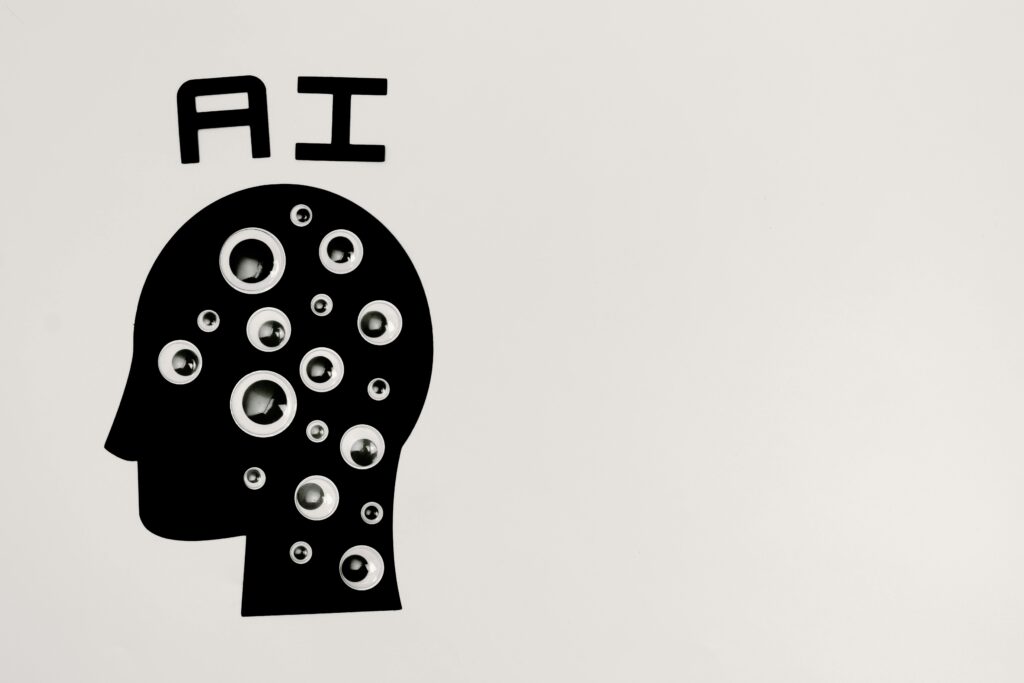Published On: November 9th 2025
Authored By: Janvi Trivedi
M. B. Khalsa Law College
Abstract
In conflict zones, the prevailing perception is often that legal and moral standards diminish, yet human rights laws are designed to persist. This scholarly article delves into the role of international norms and institutions in safeguarding human dignity amidst the tumult of armed confrontations. Through an examination of various case studies from conflict regions worldwide, it elucidates the mechanisms through which legal structures—such as treaties, conventions, and judicial bodies—intervene to safeguard civilians, mitigate violence, and ensure accountability for transgressors.
The analysis uncovers a nuanced dichotomy: notwithstanding the moral and legal constraints upheld by norms like the Geneva Conventions and the International Criminal Court, their efficacy is contingent upon factors such as political volition, institutional capability, and public consciousness. The article exemplifies both achievements (e.g., landmark prosecutions and humanitarian interventions) and deficiencies (including non-adherence, impunity, and selective application).
Key Words: Armed conflict, International Armed Conflict, International criminal court role, Human Rights, Human Rights Law, Humanitarian Law
Introduction
The perpetration of human rights violations amidst armed hostilities constitutes among the most egregious violations of human dignity and international jurisprudence. Armed conflicts frequently encompass extensive acts of aggression against non-combatant populations, devastation of societal infrastructures, and enduring deprivation of essential rights such as the right to life, freedom, and safety. Acknowledging the severity of these transgressions, the global community has formulated legal frameworks and establishments aimed at fostering answerability and legality, prominently exemplified by the establishment of the International Criminal Court (ICC).
This scholarly exposition delves into the pivotal function of the ICC in safeguarding human rights throughout armed conflicts. It scrutinizes the court’s modus operandi within international legal systems, its jurisdictional scope and impediments, its influence on transitional justice, and its constraints and potentials as an instrument for justice dispensation and the preclusion of forthcoming atrocities. The scrutiny is informed by a diverse array of scholarly investigations, legal evaluations, and empirical cases.
The Nexus between Human Rights and Armed Conflict
Armed hostilities, whether on an international or domestic scale, result in extensive harm to non-combatant communities and the infringement of a multitude of human rights. In the present era, civilians represent an estimated 90% of casualties in modern conflicts, facing not solely the direct repercussions of aggression but also the organized deprivation of fundamental social, economic, and political entitlements crucial for their well-being and respect, including provisions like sustenance, habitation, and medical assistance. [1].
The legal framework overseeing instances of armed conflicts comprises International Humanitarian Law (IHL), commonly referred to as the laws of war, and International Human Rights Law (IHRL). These two components synergistically interact to govern behavior during conflict scenarios. International humanitarian law is primarily concerned with the regulation of belligerent actions and safeguarding individuals not involved in combat, whereas international human rights law offers extensive safeguards that are relevant in both peacetime and times of conflict. [2]. Academics observe a gradual alignment of these regulations, although discrepancies persist, notably in the reconciliation of governmental security measures with the protection of individual liberties in times of conflict. [3].
Contemporary non-international armed conflicts present distinctive obstacles, with the intricate implementation and observance of human rights legislation being crucial in addressing severe transgressions perpetrated by governmental and non-governmental entities alike. [4], [5].
The International Criminal Court: Origins and Mandate
The International Criminal Court (ICC) was founded pursuant to the Rome Statute in 1998, serving as the inaugural enduring global tribunal tasked with the prosecution of individuals implicated in genocide, crimes against humanity, war crimes, and potentially, the crime of aggression. This establishment represented a significant advancement in the international endeavor to eradicate impunity for the gravest transgressions of interest to the global community. [6].
In contrast to previous ad hoc tribunals, the International Criminal Court (ICC) operates as a permanent judicial body with comprehensive procedural and substantive legal frameworks, ensuring its autonomous operation and exercising jurisdiction that supplements that of domestic courts. The ICC’s primary objective is the investigation and prosecution of individuals accountable for grave crimes in instances where national judicial mechanisms lack the capacity or willingness to address such matters. [7].
The International Criminal Court (ICC) has a multifaceted mandate that encompasses not only prosecution but also endeavors to enhance deterrence of offenses, promote truth via truth-seeking mechanisms, and safeguard victims’ rights through reparations and involvement in legal processes. [8].
The ICC and Human Rights Protections in Armed Conflict
Prosecuting Gross Human Rights Violations
The International Criminal Court (ICC) plays a vital role in implementing human rights legislation during times of war through the prosecution of individuals responsible for severe transgressions. It tackles egregious offenses such as genocide, extensive and organized assaults on non-combatants, sexual aggression, coerced displacement, and unlawful executions—all of which constitute blatant breaches of international human rights and humanitarian regulations. [9], [10].
The prosecutions conducted by the ICC underscore the interconnectedness of fundamental human rights and the responsibility of individuals, particularly high-ranking military & political figures. Through its focus on top officials and those with significant culpability, the ICC aims to halt patterns of violence and exemption from punishment. [11].
Victim Participation and Reparations
The International Criminal Court (ICC) has notably acknowledged victims not solely in a testimonial role but as active participants entitled to express their perspectives and pursue restitution. This development signifies a substantial humanization of global judicial processes, underscoring the pivotal role of victims. Nevertheless, certain academics point out a disparity between legally defined victim status and the lived experiences of those impacted by conflicts, warning that legal procedures might oversimplify victim narratives. [12].
Reparations mandated by the ICC are designed to redress harm, facilitate societal change, exemplified by instances in Sierra Leone and Colombia. This form of restorative justice plays a vital role in societal reconstruction and mitigating the risk of recidivism into conflict. [8].
Bridging Legal Gaps and Challenges
The International Criminal Court (ICC) serves to enhance alignment and reduce discrepancies between human rights and humanitarian law, yet encounters obstacles. An illustrative instance is the inadequate consideration of environmental devastation in times of conflict due to constraints in ICC authority, underscoring the intricacies inherent in remedying a wide array of wartime atrocities. [13].
The court faces challenges in delineating criminal offenses within dynamic conflict scenarios, including the classification of coerced unions and the extent of sexual violence transgressions, seeking to harmonize legal precision with safeguarding victims and meeting demands for justice. [10].
The efficacy of the International Criminal Court (ICC) is constrained by its reliance on state collaboration and approval, particularly when confronted with resistance from influential states or regional entities, exemplified by challenges in its interactions with the African Union. [14].
The ICC’s Influence on Transitional Justice and Post-Conflict Societies
Transitional justice mechanisms such as truth commissions, reparations, and amnesties interface with International Criminal Court (ICC) prosecutions to manage historical injustices. In contexts like post-conflict Colombia, the ICC’s involvement supplements domestic initiatives through the establishment of global legal norms for ensuring accountability. [15], [16].
The International Criminal Court (ICC) promotes the fulfillment of states’ obligations to safeguard human rights, offering both a legal framework and ethical motivation to confront widespread rights abuses. Its intervention supports aspirations for societal change in conjunction with legal proceedings, despite potential conflicts between global justice initiatives and community-based reconciliation efforts. [17].
Criticisms and Limitations of ICC
The International Criminal Court (ICC), while noted for its accomplishments, is not devoid of critiques. Its mandate is constrained to offenses occurring post-inception and within the jurisdiction of member states or via UN Security Council authorization, posing dilemmas related to inclusivity and political bias. [18].
Challenges related to the autonomy of states, notably those with significant influence such as the United States, have resulted in animosity and lack of collaboration, impacting the court’s ability to execute its duties efficiently. [19].
Furthermore, issues are present regarding the limited resources of the court, the duration and intricacy of legal proceedings, and the equilibrium between ensuring the rights of the defendant and providing redress for victims. [20].
Academic discourse also encompasses debates regarding the International Criminal Court’s efficacy in fostering peace. Some contend that its prosecutions amid active conflicts could escalate hostilities, whereas others underscore its function in deterring atrocities and advancing judicial answerability. [11].
The ICC and the Broader International Legal and Political Context
The International Criminal Court (ICC) functions within a multifaceted global legal framework characterized by the intersection of human rights, humanitarian and criminal law. Its operations are intricately shaped by the interplay of state and international institutional support. Notably, factors such as referrals from the UN Security Council, interactions with host states, and international collaboration play pivotal roles in determining the efficacy of the ICC. [21], [18].
The court symbolizes endeavors to “assert legal authority over those in power,” confronting immunity and promoting human dignity within geopolitical contexts. [22].
Conclusion and Future Prospects
The establishment of the ICC marks a pivotal development in the global endeavor to uphold human rights amidst armed conflicts. Through the prosecution of the most severe transgressions, facilitation of victim involvement, and influence on transitional justice processes, the ICC significantly contributes to the promotion of accountability.
Nonetheless, the Court faces a myriad of legal, political, and operational obstacles that necessitate adept navigation to amplify its efficacy. Vital strategies for bolstering its impact encompass reinforcing collaboration, elucidating its jurisdictional and substantive parameters, and aligning its initiatives with broader endeavors in peace and justice.
Specific Follow-Up Suggestions
Would you wish for a more detailed exploration into any of the subsequent areas?
- The ramifications of the ICC’s case studies on societies that have been affected
- Obstacles and criticisms concerning the ICC’s jurisdiction and political challenges
- The convergence of human rights, humanitarian law, and criminal law in instances of armed conflicts
- The involvement of victims in legal proceedings and processes for compensation within the ICC
- The correlation between the ICC and regional entities such as the African Union.
References
- Mary Robinson, ‘Message of the United Nations High Commissioner for Human Rights’ (2002)[1]
- Fin-Jasper Langmack, Reparation in Transitional Justice: A Normative Framework (Nomos, 1st edn 2023) https://www.nomoselibrary.de/10.5771/9783748938828/reparation-in-transitional-justice accessed 06 September 2025 [8]
- Gaggioli, Gloria, ‘Sexual Violence in Armed Conflicts: A Violation of International Humanitarian Law and Human Rights Law’ (2014) 96 International Review of the Red Cross 894, 503–538 link accessed 10 September 2025 [9]
- Victoria May Kerr, ‘Should Forced Marriages be Categorised as “Sexual Slavery” or “Other Inhumane Acts” in International Criminal Law?’ (2020) 35(1) Utrecht Journal of International and European Law 1–19 link accessed 10 September 2025[10]
- Alejandro Aponte Cardona, ‘Criminal Prosecution of International Crimes: The Colombian Case’ (2010) 10 International Criminal Law Review 549–569 link accessed 14 September 2025 [16]
- Eberechi Ifeonu, ‘Armed Conflicts in Africa and Western Complicity: A Disincentive for African Union’s Cooperation with the ICC’ (2009) 3 African Journal of Legal Studies 53–76 link accessed 14 September 2025 [14]
- Simmons, B. A., & Danner, A. M. (2010). Credible Commitments and the International Criminal Court. [11]
- Robert Cryer, ‘Sudan, Resolution 1593, and International Criminal Justice’ (2006) 19 Leiden Journal of International Law 195–222. [18]
- William A Schabas, ‘United States Hostility to the International Criminal Court: It’s All About the Security Council’ (2004) 15 European Journal of International Law 701–720.[19]
- Emma Irving, ‘The Relationship between the International Criminal Court and its Host State: The Impact on Human Rights’ (2014) 27(2) Leiden Journal of International Law 479–493 [21]
- Mark A Drumbl, ‘International Human Rights, International Humanitarian Law, and Environmental Security: Can the International Criminal Court Bridge the Gaps?’ (2000) 6 ILSA Journal of International & Comparative Law 305 https://nsuworks.nova.edu/ilsajournal/vol6/iss2/5 accessed 14 September 2025 [13]
- Payam Akhavan, ‘Reconciling Crimes Against Humanity with the Laws of War: Human Rights, Armed Conflict, and the Limits of Progressive Jurisprudence’ (2008) 6 Journal of International Criminal Justice 21–37link accessed 16 September 2025[23]
- Marlies Glasius, The International Criminal Court: A Global Civil Society Achievement (Routledge 2006). [24]




